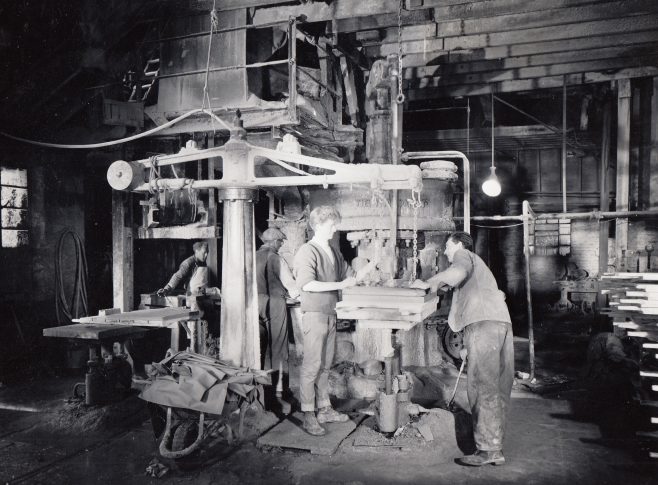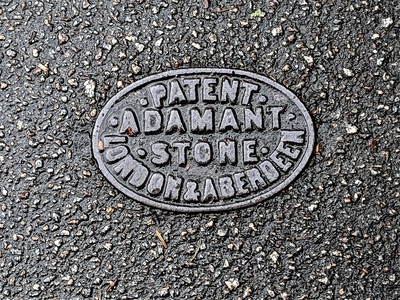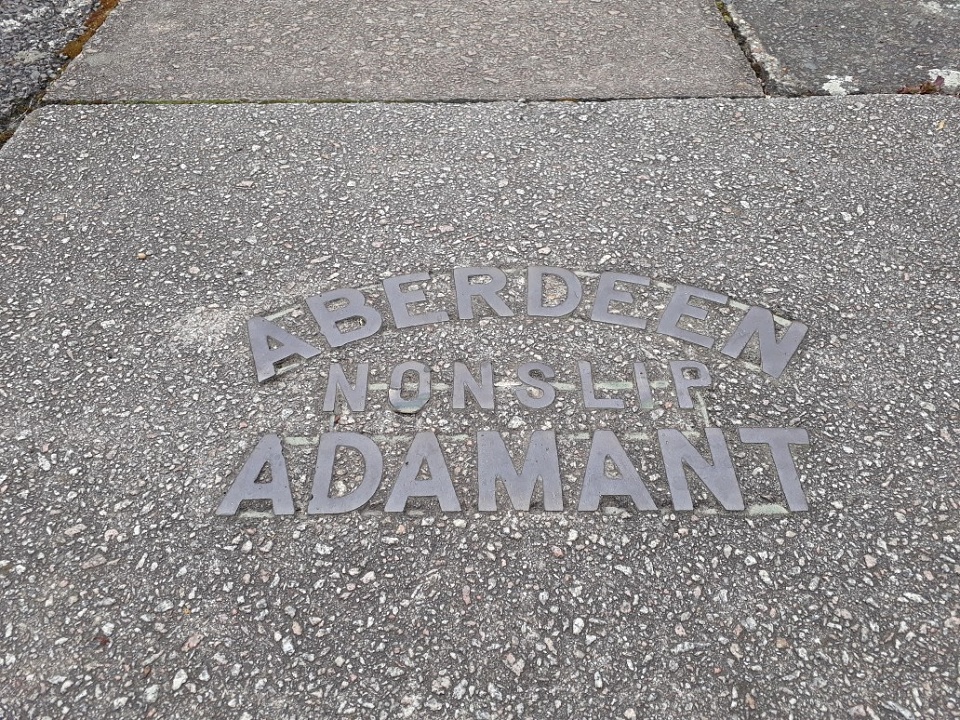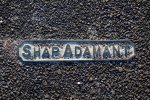-
Our new ticketing site is now live! Using either this or the original site (both powered by TrainSplit) helps support the running of the forum with every ticket purchase! Find out more and ask any questions/give us feedback in this thread!
You are using an out of date browser. It may not display this or other websites correctly.
You should upgrade or use an alternative browser.
You should upgrade or use an alternative browser.
Shap Adamant?
- Thread starter chrisjo
- Start date
Sponsor Post - registered members do not see these adverts; click here to register, or click here to log in
R
RailUK Forums
swt_passenger
Veteran Member
- Joined
- 7 Apr 2010
- Messages
- 32,987
I think I read years ago that “Shap Adamant“ was a manufactured granite paving product.
edwin_m
Veteran Member
Guess it could be the source of the surfacing material, possibly a quarry near Shap?
duffield
Established Member
Mentioned on this nostalgia site in a discussion about paving:
Quote:
Quote:
In Stockport granite setts were used, many of them From the quarries on Shap Fell who made Shap 'Adamant' concrete flags as well, some came from Derbyshire.
Gloster
Established Member
A deduction, no more, from a bit of Googling was that Adamant was some sort of treatment for granite, and possibly other such substances, developed or marketed by Croft Granite, Brick & Concrete Co. of Leicestershire. Presumably this particular surface used material from Shap that had been so treated.
== Doublepost prevention - post automatically merged: ==
EDIT: A bit of Googling of Croft Adamant produces one useful result. It seems that Adamant was artificial granite made by mixing granite chippings with slow-setting Portland cement: it was used for other items than paving.
== Doublepost prevention - post automatically merged: ==
EDIT: A bit of Googling of Croft Adamant produces one useful result. It seems that Adamant was artificial granite made by mixing granite chippings with slow-setting Portland cement: it was used for other items than paving.
Last edited:
'Adamant' was a trademark of the Adamant Stone & Paving Company Ltd. of London and Aberdeen (formed in 1885), which covered their patent process of producing manufactured hard stone paving slabs and other architectural components (such as window surrounds, corner stones, kerb stones and rain gutters) using a stone and cement slip mixture in porous moulds cast under hydraulic pressure using specialist presses made to their design by Fielding & Platt.

Their factory was at Dancing Cairns Quarry near Aberdeen, where they used crushed granite to produce 'Aberdeen Adamant' paving stones.

They went on develop a process to use pulverised clinker from corporation waste destructors as an alternative to stone, which was patented in 1893. They were so dominant in the market around the turn of the century that 'adamant stone' became a catch-all term for manufactured stone products.
There is a patent infringement case from 1895 where Liverpool Corporation were using the Adamant clinker process to make paving slabs without seeking a licence, which the corporation lost. The works at Dancing Cairns Quarry seems to have closed in the 1970s (and the quarry a couple of decades prior), but Adamant Stone relocated to Uddingston near Glasgow (they possibly merged with Centurion Brick Ltd., as they shared the same address) and was wound up in 2001 (by which time Centurion had been purchased by Ibstock, who closed down the Uddingston site in 2007). By then of course it's patents had long expired (their method became the standard way of producing paving stones and other manufactured stoneware) and the trademark as a product name had fallen out of popular use after WWII.
The trademark ended up with another historic Aberdeen-based quarrying and building materials company, John Fyfe Ltd, but expired in 2010.
'Shap Adamant' was a product of the Shap Granite and Patent Concrete Co. Ltd (the Shap Granite Co. Ltd from 1907)., who had presumably licenced the process and trademark from Adamant, The Croft Granite, Brick & Concrete Co. Ltd. of Leicester and Jersey also seem to have licenced the process and trademark, and marketed their products under the name extensively (both companies also bought their presses from Fielding & Platt). There was also the Newington Adamant Stone & Granite Co. Ltd of Manchester and Hull, which operated between 1915 and 1932.
Rhyl Station was remodelled by the LNWR when they quadrupled the line in 1897, which was right when 'Adamant' paving stones were the hot new product. At that time the manufacturers would ususally supply one or two pavers for each contract with their name cast into a metal plaque that would be placed into the mould to be embedded into the concrete.



Their factory was at Dancing Cairns Quarry near Aberdeen, where they used crushed granite to produce 'Aberdeen Adamant' paving stones.
They went on develop a process to use pulverised clinker from corporation waste destructors as an alternative to stone, which was patented in 1893. They were so dominant in the market around the turn of the century that 'adamant stone' became a catch-all term for manufactured stone products.
There is a patent infringement case from 1895 where Liverpool Corporation were using the Adamant clinker process to make paving slabs without seeking a licence, which the corporation lost. The works at Dancing Cairns Quarry seems to have closed in the 1970s (and the quarry a couple of decades prior), but Adamant Stone relocated to Uddingston near Glasgow (they possibly merged with Centurion Brick Ltd., as they shared the same address) and was wound up in 2001 (by which time Centurion had been purchased by Ibstock, who closed down the Uddingston site in 2007). By then of course it's patents had long expired (their method became the standard way of producing paving stones and other manufactured stoneware) and the trademark as a product name had fallen out of popular use after WWII.
The trademark ended up with another historic Aberdeen-based quarrying and building materials company, John Fyfe Ltd, but expired in 2010.
'Shap Adamant' was a product of the Shap Granite and Patent Concrete Co. Ltd (the Shap Granite Co. Ltd from 1907)., who had presumably licenced the process and trademark from Adamant, The Croft Granite, Brick & Concrete Co. Ltd. of Leicester and Jersey also seem to have licenced the process and trademark, and marketed their products under the name extensively (both companies also bought their presses from Fielding & Platt). There was also the Newington Adamant Stone & Granite Co. Ltd of Manchester and Hull, which operated between 1915 and 1932.
Rhyl Station was remodelled by the LNWR when they quadrupled the line in 1897, which was right when 'Adamant' paving stones were the hot new product. At that time the manufacturers would ususally supply one or two pavers for each contract with their name cast into a metal plaque that would be placed into the mould to be embedded into the concrete.


Last edited:
Many thanks everyone, particularly @Prime586 for going above and beyond. This place is brilliant! The Rhyl example is indeed enclosed within a paving slab, like the others.
It's rather a remarkable co-incidence that my eldest daughter and her family now live within shouting distance of the site of the old Dancingcairns Quarry in Bucksburn, Aberdeen.
It's rather a remarkable co-incidence that my eldest daughter and her family now live within shouting distance of the site of the old Dancingcairns Quarry in Bucksburn, Aberdeen.
Last edited:
swt_passenger
Veteran Member
- Joined
- 7 Apr 2010
- Messages
- 32,987
Another interesting google snippet, there’s a village called Adamant in Vermont USA, and nearby they found Adamant Granite, which the US Geological Survey seem to define as a type of Granite. Was the place named for the rock, or the rock named for the place? So the UK use of the word Adamant may follow the naming of the variety of rock, and it’s not random.
The Adamant Works was on Auchmill Rd, under what is now a housing development.It's rather a remarkable co-incidence that my eldest daughter and her family now live within shouting distance of the site of the old Dancingcairns Quarry in Bucksburn, Aberdeen.
For the etymology of the word Adamant, see: https://en.wikipedia.org/wiki/Adamant
Indeed. My daughter lives on Mugiemoss Rd, just next door.The Adamant Works was on Auchmill Rd, under what is now a housing development.
The granite extracted at Dancing Cairns and the surrounding quarries is from the Aberdeen formation. Adamant was chosen as the company name as it was an ancient greek word for a form of diamond, which later became associated with any form of hard stone.Another interesting google snippet, there’s a village called Adamant in Vermont USA, and nearby they found Adamant Granite, which the US Geological Survey seem to define as a type of Granite. Was the place named for the rock, or the rock named for the place? So the UK use of the word Adamant may follow the naming of the variety of rock, and it’s not random.
The village in Vermont was originally called Sodom when granite quarrying from the Plainfield quadrangle formation started there in the mid-1800s. The local preacher petitioned to change the name of the village to Adamant in 1905 ("A name perhaps as hard but not as wicked"), long after the Adamant process was patented and the name trademarked in the UK. (i don't believe the company applied for a patent or trademark in the US). The granite quarried in the area then was referered to as Adamant Granite, though it was only officially classified as such by the US Geological Survey in a report made by Wallace M. Cady in 1956.
The Adamant name was also used by Colorado company that made engineering and fire bricks (i.e. very hard bricks) from around the turn of the 20th century.
Due to the word's historical connection with diamond, in the 1950s it was also used by a Japanese company, Adamant Namiki Precision Jewel Co., who made synthetic jewel bearings for measurement instruments and watches, and later branched out into producing ferrules and collimating lenses for optical fibres.
swt_passenger
Veteran Member
- Joined
- 7 Apr 2010
- Messages
- 32,987
Thanks for the above detail.The granite extracted at Dancing Cairns and the surrounding quarries is from the Aberdeen formation. Adamant was chosen as the company name as it was an ancient greek word for a form of diamond, which later became associated with any form of hard stone.
The village in Vermont was originally called Sodom when granite quarrying from the Plainfield quadrangle formation started there in the mid-1800s. The local preacher petitioned to change the name of the village to Adamant in 1905 ("A name perhaps as hard but not as wicked"), long after the Adamant process was patented and the name trademarked in the UK. (i don't believe the company applied for a patent or trademark in the US). The granite quarried in the area then was referered to as Adamant Granite, though it was only officially classified as such by the US Geological Survey in a report made by Wallace M. Cady in 1956.
The Adamant name was also used by Colorado company that made engineering and fire bricks (i.e. very hard bricks) from around the turn of the 20th century.
Due to the word's historical connection with diamond, in the 1950s it was also used by a Japanese company, Adamant Namiki Precision Jewel Co., who made synthetic jewel bearings for measurement instruments and watches, and later branched out into producing ferrules and collimating lenses for optical fibres.
styles
Member
Ironically I expect the text 'Non Slip' is actually rather slippery when wet.
Interesting history though, thanks!
Not forgetting Adam Adamant:
https://en.wikipedia.org/wiki/Adam_Adamant_Lives!
https://en.wikipedia.org/wiki/Adam_Adamant_Lives!
Adam Adamant Lives! is a British adventure television series that ran from 1966 to 1967 on BBC 1, starring Gerald Harper in the title role. The series was created and produced by several alumni from Doctor Who. The titular character was an adventurer born in 1867, who had been revived from hibernation in 1966, thus offering a satirical look at life in the 1960s through the eyes of a Victorian.

